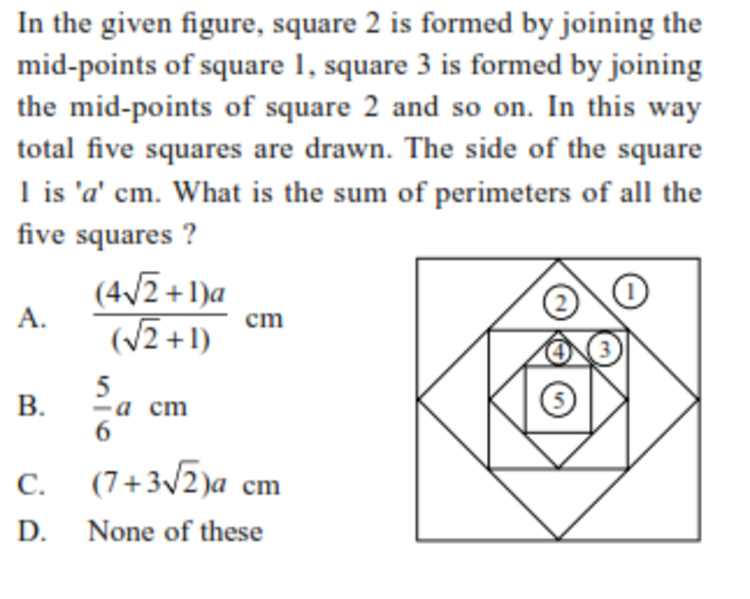This section requires Javascript.
You are seeing this because something didn't load right. We suggest you, (a) try
refreshing the page, (b) enabling javascript if it is disabled on your browser and,
finally, (c)
loading the
non-javascript version of this page
. We're sorry about the hassle.

Let the side of the first square be a, so its area a1=a^2; Next square will have the diagonal equal to a, so its area a2=a^2/2; And so on.
So the areas of the squares will form infinite geometric progression (GP): a^2, a^2/2, a^2/4, a^2/8, a^2/16 with common ratio (r) equal to 1/2.
Sides of the squares will form another GP: a, a/√2, a/2, a/2√2, a/4 with r = 1/√2
& perimeters of the squares will also form GP: 4a, 2√2a, 2a, √2a, a with r = 1/√2
Sum of perimeters = 4a+2√2a + 2a + √2a + a = (7+3√2)a
OR using the sum of the progression formula,
For GP with r, |r|<1, the sum of the progression is sum=b(1-r^n)/(1−r), where b is the first term and n is number of terms. b=4a, n=5
So the sum of the perimeters will be sum of GP= 4a*(1-(1/√2)^5)/(1-(1/√2)) = (7+3√2)a